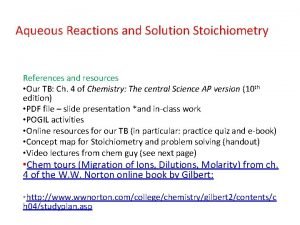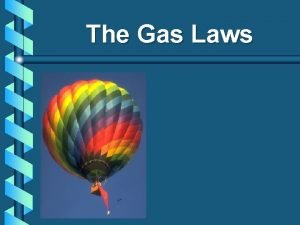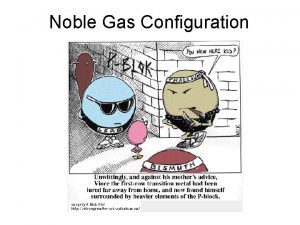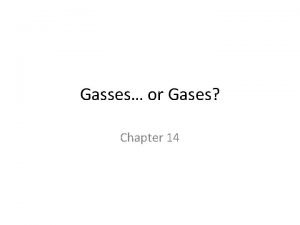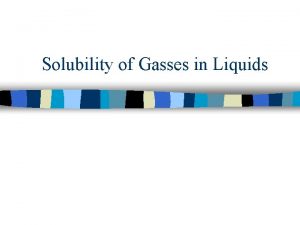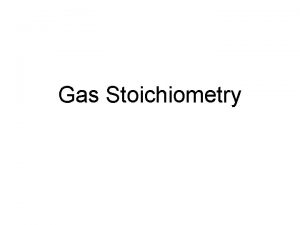12 5 Reactions of Gasses and Gas Stoichiometry






- Slides: 6

12. 5 Reactions of Gasses and Gas Stoichiometry

Gas Stoichiometry • Recall: The law of combining volumes – When gases react, the volumes of the reactants and products react in whole-number ratios if the temperatures and pressures are constant. – We can use this information when working on gas stoichiometry problems to identify unknown volumes – Example: H 2 + Cl 2 2 HCl Mole ratio: Volume ratio: 1 : 1 : 2 2

Example A catalytic converter in the exhaust system of a car uses oxygen (from the air) and a catalyst to convert carbon monoxide to carbon dioxide. If the temperature and pressure remain the same, what volume of oxygen is required to react with 65. 0 L of carbon monoxide produced during a road trip?

Gas Stoichiometry • More commonly, temperature and pressure vary during a chemical reaction. • In this case, we use the ideal gas law (PV=n. RT) to calculate the volume of a gas given using stoichiometry.

Example 1. What volume of carbon dioxide is produced when 6. 40 g of methane gas, CH 4(g), reacts with excess oxygen? All gases are at 35. 0 °C and 100. 0 k. Pa. 2. What mass of sodium azide is required to produce the 67. 0 L of nitrogen gas that is required to fill a safety airbag in an automobile? Assume that the gas is produced at a temperature of 32 °C and a pressure of 105 k. Pa.

Homework Read Section 12. 5 Questions p. 599 #1 -3 p. 602 #1 -3 p. 603 #5 -7(optional)
